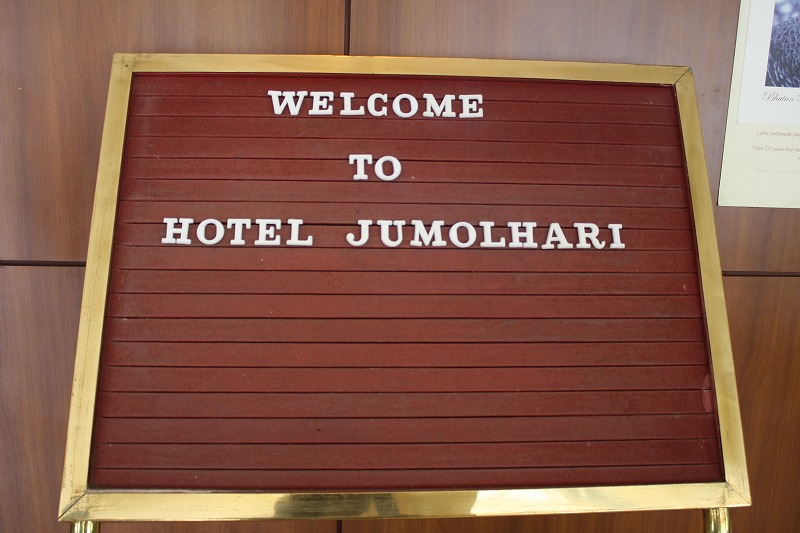battle of the atlantic ww2 quizletudell funeral home obituaries
battle of the atlantic ww2 quizlet
These aircraft were few in number, however, and directly under Luftwaffe control; in addition, the pilots had little specialised training for anti-shipping warfare, limiting their effectiveness. Throughout the summer and autumn of 1941, Enigma intercepts (combined with HF/DF) enabled the British to plot the positions of U-boat patrol lines and route convoys around them. On February 1, 1942, the Kriegsmarine switched the U-boats to a new Enigma network (TRITON) that used the new, four-rotor, Enigma machines. [106] After the improved radar came into action shipping losses plummeted, reaching a level significantly (p=0.99) below the early months of the war. After achieving stunning success in the early months of the campaign, the attack stalled and the Soviets . During the Second World War nearly one third of the world's merchant shipping was British. 4-13 July 1943. The Flower-class corvette escorts could detect and defend, but they were not fast enough to attack effectively. An escort could then run in the direction of the signal and attack the U-boat, or at least force it to submerge (causing it to lose contact), which might prevent an attack on the convoy. [26] Convoys allowed the Royal Navy to concentrate its escorts near the one place the U-boats were guaranteed to be found, the convoys. Damaged ships might survive but could be out of commission for long periods. The Battle of the Atlantic brought the war to Canada's doorstep, with U-boats torpedoing ships within sight of Canada's East Coast and even in the St. Lawrence River. Dnitz promptly planned to attack shipping off the American East Coast. World War II for Kids: Battle of the Atlantic - Ducksters 17-25 September. In June 1941, the British decided to provide convoy escort for the full length of the North Atlantic crossing. Nor were they able to focus their effort by targeting the most valuable cargoes, the eastbound traffic carrying war materiel. Above 15 knots (28km/h) or so, the noise of the ship going through the water drowned out the echoes. However, the Admiralty did not change the codes until June, 1943. In North Africa, General Dwight D. Eisenhower defeated German troops and took back the land. Allied victory in the Second World War would not have been possible without victory at sea. 19 February-26 March 1945. Strongest of a series of fortified defensive lines between Naples and Rome. The 11 most significant battles of WW2 - HistoryExtra Since two or three of the group would usually be in dock repairing weather or battle damage, the groups typically sailed with about six ships. The Allies won because they had radar which allowed them to sense the U-boats. In all, 43U-boats were destroyed in May, 34 in the Atlantic. In essence, the Battle of the Atlantic involved a tonnage war; the Allied struggle to supply Britain, and the Axis attempt to stem the flow of merchant shipping that enabled Britain to keep fighting. For webquest or practice, print a copy of this quiz at the World War II - Battle of the Atlantic webquest print page. gerund phrase. [citation needed] His ships were also busy convoying Lend-Lease material to the Soviet Union, as well as fighting the Japanese in the Pacific. Larger numbers of escorts became available, both as a result of American building programmes and the release of escorts committed to the North African landings during November and December 1942. Ten ships were sunk, but another U-boat was lost. Instead of being faced by single submarines, the convoy escorts then had to cope with groups of up to half a dozen U-boats attacking simultaneously. A Mid-Ocean Escort Force of British, and Canadian, and American destroyers and corvettes was organised following the declaration of war by the United States in December 1941. The escort vessels, which were too few in number and often lacking in endurance, had no answer to multiple submarines attacking on the surface at night as their ASDIC only worked well against underwater targets. The British and French formed a series of hunting groups including threebattlecruisers, threeaircraft carriers, and 15cruisers to seek the raider and her sister Deutschland, which was operating in the North Atlantic. When one boat sighted a convoy, it would report the sighting to U-boat headquarters, shadowing and continuing to report as needed until other boats arrived, typically at night. In 1941, American intelligence informed Rear Admiral John Henry Godfrey that the UK naval codes could be broken. Joined later by Hungary, Romania, Slovakia, Bulgaria, Yugoslavia, and Croatia, New French government set up by Marshal Philippe Ptain. Study with Quizlet and memorize flashcards containing terms like U-boat, Scapa flow, Laconia Incident and more. Britain eventually had to build coastal escorts and provide them to the US in a "reverse Lend Lease", since King was unable (or unwilling) to make any provision himself.[62]. Nevertheless, with intelligence coming from resistance personnel in the ports themselves, the last few miles to and from port proved hazardous to U-boats. It began on September 3, 1939 and lasted until the end of the war. Which urban innovation was most closely linked to the growth of suburbs? The Metox set beeped at the pulse rate of the hunting aircraft's radar, approximately once per second. These aircraft first made contact with enemy submarines using air-to-surface-vessel (ASV) radar. A series of battles resulted in fewer victories and more losses for UbW. Complete the sentence below in a way that reflects the meaning of the Critical Vocabulary word. The Allies were now able to decipher . Conjecture - guess. Some British naval officials, particularly the First Lord of the Admiralty, Winston Churchill, sought a more 'offensive' strategy. The resulting concentration near Gibraltar resulted in a series of battles around the Gibraltar and Sierra Leone convoys. Battle of the Atlantic | National Museum of American History Pack tactics were first used successfully in September and October 1940 to devastating effect, in a series of convoy battles. German submarines, or U-boats, posed a constant threat to Allied vessels, even ships in U.S. coastal waters; by war's end, more than 2,500 would be sunk. . Then, about a 1 mile (1.6km) from the target, the Leigh Light would be switched on. Battle of the Atlantic, in World War II, a contest between the Western Allies and the Axis powers (particularly Germany) for the control of Atlantic sea routes. Victory was achieved at a huge cost: between 1939 and 1945, 3,500 Allied merchant ships (totalling 14.5million gross tons) and 175 Allied warships were sunk and some 72,200 Allied naval and merchant seamen died. Late in the war, the Germans introduced the Elektroboot: the Type XXI and short range Type XXIII. It worked simply with a crossed pair of conventional and fixed directional aerials, the oscilloscope display showing the relative received strength from each aerial as an elongated ellipse showing the line relative to the ship. U-boats disrupted coastal shipping from the Caribbean to Halifax, during the summer of 1942, and even entered into battle in the Gulf of St.Lawrence. The defeat of the U-boat was a necessary precursor for accumulation of Allied troops and supplies to ensure Germany's defeat. In response, the British applied the techniques of operations research to the problem and came up with some counter-intuitive solutions for protecting convoys. Immediate diving remained a U-boat's best survival tactic when encountering aircraft. World War II Quiz - US History Quiz Usually the target was found visually. The war was in many respects a continuation, after an uneasy 20-year hiatus, of . [28] Similar problems plagued the US Navy's Mark 14 torpedo, but it ignored the reports of German problems.[29]. September 1941-January 1944. For the balance of the war, the Allies exercised unchallenged control of Atlantic sea-lanes. World War II | Facts, Summary, History, Dates, Combatants, & Causes During 1940, 178 Enigma messages were broken on the British bombe.[57]. In March, 1942, the Germans broke Naval Cipher 3, the code for Anglo-American communication. There were heavy causalities on both sides and it was the first major successful battle against Japan. WW2 battle of the Atlantic Flashcards | Quizlet Terms in this set (25) U-boat. From the summer of 1940 a small but steady stream of warships and armed merchant raiders set sail from Germany for the Atlantic. Let us know if you have suggestions to improve this article (requires login). Made up of 43merchantmen escorted by 16 warships, it was attacked by a pack of 30U-boats. But the battle was not yet over. In January 1943, American, British and Free French Political and Military leaders met to discuss the priorities of Antisubmarine Warfare in the Atlantic and the planned Invasion of Sicily. As a result, the Axis needed to sink 700,000GRT per month; as the massive expansion of the US shipbuilding industry took effect this target increased still further. [13] The Germans were joined by submarines of the Italian Regia Marina (Royal Navy) after Germany's Axis ally Italy entered the war on June 10, 1940. U-39 was forced to surface and scuttle by the escorting destroyers, becoming the first U-boat loss of the war. ", The US, having no direct experience of modern naval war on its own shores, did not employ a black-out. They also announced they would only accept unconditional surrender by the Axis powers. General Arnold ordered his squadron commander to engage only in "offensive" search and attack missions and not in the escort of convoys. Early in the war, Dnitz submitted a memorandum to Grand Admiral Erich Raeder, the German navy's Commander-in-Chief, in which he estimated effective submarine warfare could bring Britain to its knees because of the country's dependence on overseas commerce. By Mohammed Vasanwala. The carrier aircraft were little help; although they could spot submarines on the surface, at this stage of the war they had no adequate weapons to attack them, and any submarine found by an aircraft was long gone by the time surface warships arrived. Siege failed and the Allies advanced through Belgium, American and Soviet forces met at the Elbe river effectively cutting Germany in half, Mussolini captured and killed trying to escape to Switzerland, Adolph Hitler commits suicide after naming Admiral Dnitz his successor, John Lund, Paul S. Vickery, P. Scott Corbett, Todd Pfannestiel, Volker Janssen, Eric Hinderaker, James A. Henretta, Rebecca Edwards, Robert O. Self. The Allies were victorious in Soviet Union by trapping a large German force in Stalingrad. The Americans Arrive. Established fix goods for the military and gave ration books out for scarce goods. Upon sighting a target, they would come together to attack en masse and overwhelm any escorting warships. These were primarily Fw200 Condors and (later) Junkers Ju 290s, used for long-range reconnaissance. However, a U-boat that remained surfaced increased the risk of its pressure hull being punctured, making it unable to submerge, while attacking pilots often called in surface ships if they met too much resistance, orbiting out of range of the U-boat's guns to maintain contact. [citation needed] An estimated 1,600 merchant sailors were killed, including eight women. The innovation was a 'sense' aerial, which, when switched in, suppressed the ellipse in the 'wrong' direction leaving only the correct bearing. A. ocured Women and minorities joined war effort by serving in military, even if not in combat. [citation needed] Information obtained by British agents regarding German shipping movements led Canada to conscript all its merchant vessels two weeks before actually declaring war, with the Royal Canadian Navy taking control of all shipping August 26, 1939. Submarine Warfare by the Germans proved highly successful early in the war. In return, the United States received 99-year leases for bases in Newfoundland, in Bermuda, and at numerous points in the Caribbean. Obviously this subdivision of the data ignores many other defensive measures the Allies developed during the war, so interpretation must be constrained. Six Canadian destroyers and 17corvettes, reinforced by seven destroyers, three sloops, and five corvettes of the Royal Navy, were assembled for duty in the force, which escorted the convoys from Canadian ports to Newfoundland and then on to a meeting point south of Iceland, where the British escort groups took over. C. The war led to a boom in industrial production and a major increase in employment. The Condors also bombed convoys that were beyond land-based fighter cover and thus defenceless. (This may be the ultimate example of the Allied practise of evasive routing.) Is jocularity likely to be the trademark of a funeral director or a talk-show host. The institution of an interlocking convoy system on the American coast and in the Caribbean Sea in mid-1942 resulted in an immediate drop in attacks in those areas. Battle of the Atlantic, in World War II, a contest between the Western Allies and the Axis powers (particularly Germany) for the control of Atlantic sea routes.For the Allied powers, the battle had three objectives: blockade of the Axis powers in Europe, security of Allied sea movements, and freedom to project military power across the seas. The new battleship Bismarck and the cruiser Prinz Eugen put to sea to attack convoys. Admiral Ernest King, Commander-in-Chief United States Fleet (Cominch), who disliked the British, initially rejected Royal Navy calls for a coastal black-out or convoy system. The Battle of the Atlantic. 4-13 July 1943. This was true in the Kriegsmarine as well; Raeder successfully lobbied for the money to be spent on capital ships instead. Although the Battle of the Atlantic continued until the end of the war and there remained attacks during 1944 and 1945, the Allies held the advantage from 1943. The development of the improved radar by the Allies began in 1940, before the United States entered the war, when Henry Tizard and A. V. Hill won permission to share British secret research with the Americans, including bringing them a cavity magnetron, which generates the needed high-frequency radio waves. The U-boats were further critically hampered after D-Day by the loss of their bases in France to the advancing Allied armies. Meanwhile the Allies had to wrestle control of the seas to . This was 25% of German U-boat Arm's total operational strength. The turning point was the battle centred on slow convoy ONS 5 (AprilMay 1943). The British codebreakers needed to know the wiring of the special naval Enigma rotors, and the destruction of U-33 by HMSGleaner (J83) in February 1940 provided this information. On the line provided, write the correct form (past or past participle) of the verb given in italics. The USA was sending supplies to Britain. On September 21, convoy HX 72 of 42merchantmen was attacked by a pack of four U-boats, which sank eleven ships and damaged two over the course of two nights. On May 21, SSRobin Moor, an American vessel carrying no military supplies, was stopped by U-69 750 nautical miles (1,390km) west of Freetown, Sierra Leone. [89][90] In Brazilian waters, eleven other Axis submarines were known to be sunk between January and September 1943the Italian Archimede and ten German boats: U-128, U-161, U-164, U-507, U-513, U-590, U-591, U-598, U-604, and U-662. Principal Objective was to capture the port city of Cherbourg and establish a foothold in Europe by June 25th Cherbourg was captured and 40,000 soldiers were captuted. With so many German raiders at large in the Atlantic, the British were forced to provide battleship escorts to as many convoys as possible. The Polish hold out for 7 days before surrendering. The vessels of the Norwegian Merchant Navy were placed under the control of the government-run Nortraship, with headquarters in London and New York. The TypeXXI could run submerged at 17 knots (31km/h), faster than a TypeVII at full speed surfaced, and faster than Allied corvettes. We could sometimes deduce when and how they would take advantage of the gaps in our U-boat dispositions. Of the U-boats, 519 were sunk by British, Canadian, or other UK-based forces, 175 were destroyed by American forces, 15 were destroyed by the Soviets, and 73 were scuttled by their crews before the end of the war for various reasons. Their actions were restricted to lone-wolf attacks in British coastal waters and preparation to resist the expected Operation Neptune, the invasion of France. How did the War Production Board (WPB) contribute to the war effort? [18] Churchill claimed to have coined the phrase "Battle of the Atlantic" shortly before Alexander's speech,[19] but there are several examples of earlier usage. The operation was a compromise between U.S. and British planners as the latter felt that the American-advocated landing in northern Europe was premature and would lead to disaster at this stage of the war. It was both the largest armoured clash and the costliest single day of aerial warfare in history. Although 13merchant ships were lost, six U-boats were sunk by the escorts or Allied aircraft. Why was this important to the outcome of WW2. The convoys were essential to the British and Soviet war efforts (read more about the Arctic convoys to the USSR in "Convoy is to Scatter" and The Ordeal of PQ-17 . 3, allowing the Germans to estimate where and when convoys could be expected. German infantry advancing on a burning village in the Soviet Union (Russia). Thousand of missions flown by the Luftwaffe to destroy the British RAF and the will of the British citizens. From the German perspective, with the conquest of western Europe complete, knocking Britain out of the war by attacking its trade seemed a manageable objective. Torpedo Alley - Wikipedia With more and better equipment, the convoy system was strengthened and extended throughout 1942. It was to be many months before these ships contributed to the campaign. Norwegian tankers carried nearly one-third of the oil transported to Britain during the war. In early 1941, the problems were determined to be due to differences in the earth's magnetic fields at high latitudes and a slow leakage of high-pressure air from the submarine into the torpedo's depth regulation gear. The Start. [23] These regulations did not prohibit arming merchantmen,[24] but doing so, or having them report contact with submarines (or raiders), made them de facto naval auxiliaries and removed the protection of the cruiser rules. [citation needed], Between February 1942 and July 1945, about 5,000 naval officers played war games at Western Approaches Tactical Unit. The German occupation of Norway in April 1940, the rapid conquest of the Low Countries and France in May and June, and the Italian entry into the war on the Axis side in June transformed the war at sea in general and the Atlantic campaign in particular in three main ways: The completion of Hitler's campaign in Western Europe meant U-boats withdrawn from the Atlantic for the Norwegian campaign now returned to the war on trade. The Battle of the Atlantic pitted the German submarine force and surface units against the U.S. Navy, U.S. Coast Guard, Royal Navy, Royal Canadian Navy, and Allied merchant convoys. U-boats nearly always proved elusive, and the convoys, denuded of cover, were put at even greater risk. With the outbreak of war, the British and French immediately began a blockade of Germany, although this had little immediate effect on German industry. In November 1942, at the height of the Atlantic campaign, the US Navy escorted the Operation Torch invasion fleet 3,000mi (4,800km) across the Atlantic without hindrance, or even being detected. A stop-gap measure was instituted by fitting ramps to the front of some of the cargo ships known as catapult aircraft merchantmen (CAM ships), equipped with a lone expendable Hurricane fighter aircraft. During that gap the Germans enjoyed their final major successes of the war: every Allied convoy was sighted, and over half were attacked. The campaign peaked from mid-1940 through to the end of 1943. If the submarine was slow to dive, the guns were used; otherwise an ASDIC (Sonar) search was started where the swirl of water of a crash-diving submarine was observed. As a result of the increased coastal convoy escort system, the U-boats' attention was shifted back to the Atlantic convoys. The Allies took over Sicily, got Mussolini imprisoned, and eventually drove Nazis out of the country. Diagram each sentence. This section deals with all types of contexts studied so far-those containing a contrasting word, a similar word, or a commonsense clue. [82] This perceived threat caused the US to decide that the introduction of US forces along Brazil's coast would be valuable. Around 2 million die in the bitter fighting. With the help of Ilyushin IL-2 the Soviets keep control of Kursk. The resulting Norwegian campaign revealed serious flaws in the magnetic influence pistol (firing mechanism) of the U-boats' principal weapon, the torpedo. During those two delays, a capable submarine commander would manoeuvre rapidly to a different position and avoid the attack. [66], Squid was an improvement on 'Hedgehog' introduced in late 1943. The Battle of the Atlantic was won by the Allies in two months. In February, the old battleship HMSRamillies deterred an attack on HX 106. This would be a 40 percent to 53 percent reduction. 2 of World War II's 5 Greatest Air Battles. Most were destroyed in Operation Deadlight after the war. Third, and unlike the Allies, the Germans were never able to mount a comprehensive blockade of Britain. [68], The Leigh Light enabled the British to attack enemy subs on the surface at night, forcing German and Italian commanders to remain underwater especially when coming into port at sub bases in the Bay of Biscay. 3 German army groups invade Soviet Union. There were about 200 000 causalities on both sides. War had come too early for the German naval expansion project Plan Z. Battleships powerful enough to destroy any convoy escort, with escorts able to annihilate the convoy, were never achieved. Two weeks later, in the battle of Convoy HX 112, the newly formed 3rd Escort Group of four destroyers and two corvettes held off the U-boat pack. The belief that ASDIC had solved the submarine problem, the acute budgetary pressures of the Great Depression, and the pressing demands for many other types of rearmament meant little was spent on anti-submarine ships or weapons. In June, General Arnold suggested the Navy assume responsibility for ASW operations. There was no single reason for this; what had changed was a sudden convergence of technologies, combined with an increase in Allied resources. For what reason does Clark bring his aunt to the concert? Stephenson.[49]. Before the war, Norway's Merchant Navy was the fourth largest in the world and its ships were the most modern. The Axis, in turn, hoped to frustrate Allied use of the Atlantic to wage war. [52] HF/DF let an operator determine the direction of a radio signal, regardless of whether the content could be read. Hitler unleashed his U-boat "wolf packs" into the Atlantic Ocean with orders to sink anything carrying aid to Britain, but Britain's and the United States' superior tactics and technology won them the Battle of the Atlantic. There had also been naval theorists who held that submarines should be attached to a fleet and used like destroyers; this had been tried by the Germans during the Battle of Jutland with poor results, since underwater communications were in their infancy. battle of the atlantic ww2 quizlet - seven10solutions.com American units were also deployed in Iceland and Greenland. Britain lost French naval support just when its own sea power had been hurt by losses incurred in the retreat from Norway and the evacuation from Dunkirk and stretched by Italian belligerency. With the battle won by the Allies, supplies poured into Britain and North Africa for the eventual liberation of Europe. The intention was to pass over the submarine, rolling depth charges from chutes at the stern at even intervals, while throwers fired further charges some 40yd (37m) to either side. d) intellectual rigor. While initial operation met with little success (only 65343GRT sunk between August and December 1940), the situation improved gradually over time, and up to August 1943 the 32 Italian submarines that operated there sank 109ships of 593,864tons,[38][39][pageneeded] for 17 subs lost in return, giving them a subs-lost-to-tonnage sunk ratio similar to Germany's in the same period, and higher overall. For the Allies, the situation was serious but not critical throughout much of 1942. Destroyer escorts and frigates were also better designed for mid-ocean anti-submarine warfare than corvettes, which, although maneuverable and seaworthy, were too short, slow, and inadequately armed to match the DEs. Click to view image. [15] The campaign started immediately after the European War began, during the so-called "Phoney War", and lasted more than five years, until the German surrender in May 1945. In April, the Admiralty took over operational control of Coastal Command aircraft. Flashcards. After Convoy ON 154, winter weather provided a brief respite from the fighting in January before convoys SC 118 and ON 166 in February 1943, but in the spring, convoy battles started up again with the same ferocity. U-boats simply stood off shore at night and picked out ships silhouetted against city lights. There were disadvantages to the early versions of this system. Much of the early German anti-shipping activity involved minelaying by destroyers, aircraft and U-boats off British ports. by BP Perry. This proves fatal in the battle of Midway. Use the word from the list only once, and explain your answer. Although the number of ships the raiders sank was relatively small compared with the losses to U-boats, mines, and aircraft, their raids severely disrupted the Allied convoy system, reduced British imports, and strained the Home Fleet. It enabled the U-boat to change position with impunity. The British lost Audacity, a destroyer and only two merchant ships. Canadians established the first convoys in the American zone, and American convoys soon followed. Stopped discrimination by threat as a union leader. Omissions? Massive system of fortifications built by the French in the late 1930s along their border with Germany. The sinking of Allied merchant ships increased dramatically. Over 30,000 men from the British Merchant Navy died between 1939 and 1945.
Army National Guard Drill Weekend Schedule 2022,
Articles B


















